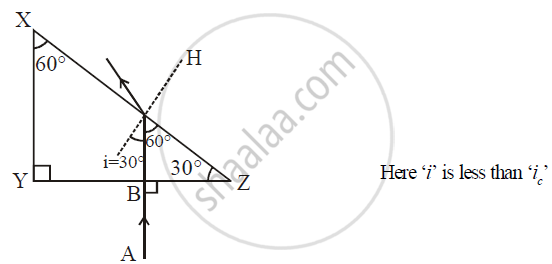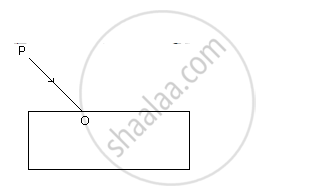Advertisements
Advertisements
प्रश्न
The following diagram shows a 60°, 30°, 90° glass prism of critical angle 42°, Copy the diagram and complete the path of incident ray AB emerging out of the prism marking the angle of incidence on each surface.

उत्तर

APPEARS IN
संबंधित प्रश्न
Define refraction and state the laws of refraction.
Draw diagrams to show the refraction of light from
- air to glass, and
- glass to air. In each diagram, label the incident ray, refracted ray, the angle of incidence
- and the angle of refraction (r).
An object is viewed through a glass prism with its vertex pointing upwards. It appears to be displaced upward. Explain the reason.
Which of the following has the highest refractive index:
In the fig., PO is a ray of light incident on a rectangular glass block.
(a) Complete the path of the ray through the block.
(b) In the diagram, mark the angle of incidence (i) and the angle of refraction (r) at the first interface. How is the refractive index of glass related to the angles I and r?
(c) Mark angle of emergence by the letter e. How are the angles i and e related?
(d) Which two rays are parallel to each other? Name them.
(e) Indicate in the diagram the lateral displacement between the emergent ray and the incident ray.

Which colour of light travels fastest in any medium except air?
Which colour of light travels fastest in any medium except air?
Does the depth of a tank of water appear to change or remain the same when viewed normally from above?
State the relation between the refractive index μ and the velocity of light (vm) in that medium.
